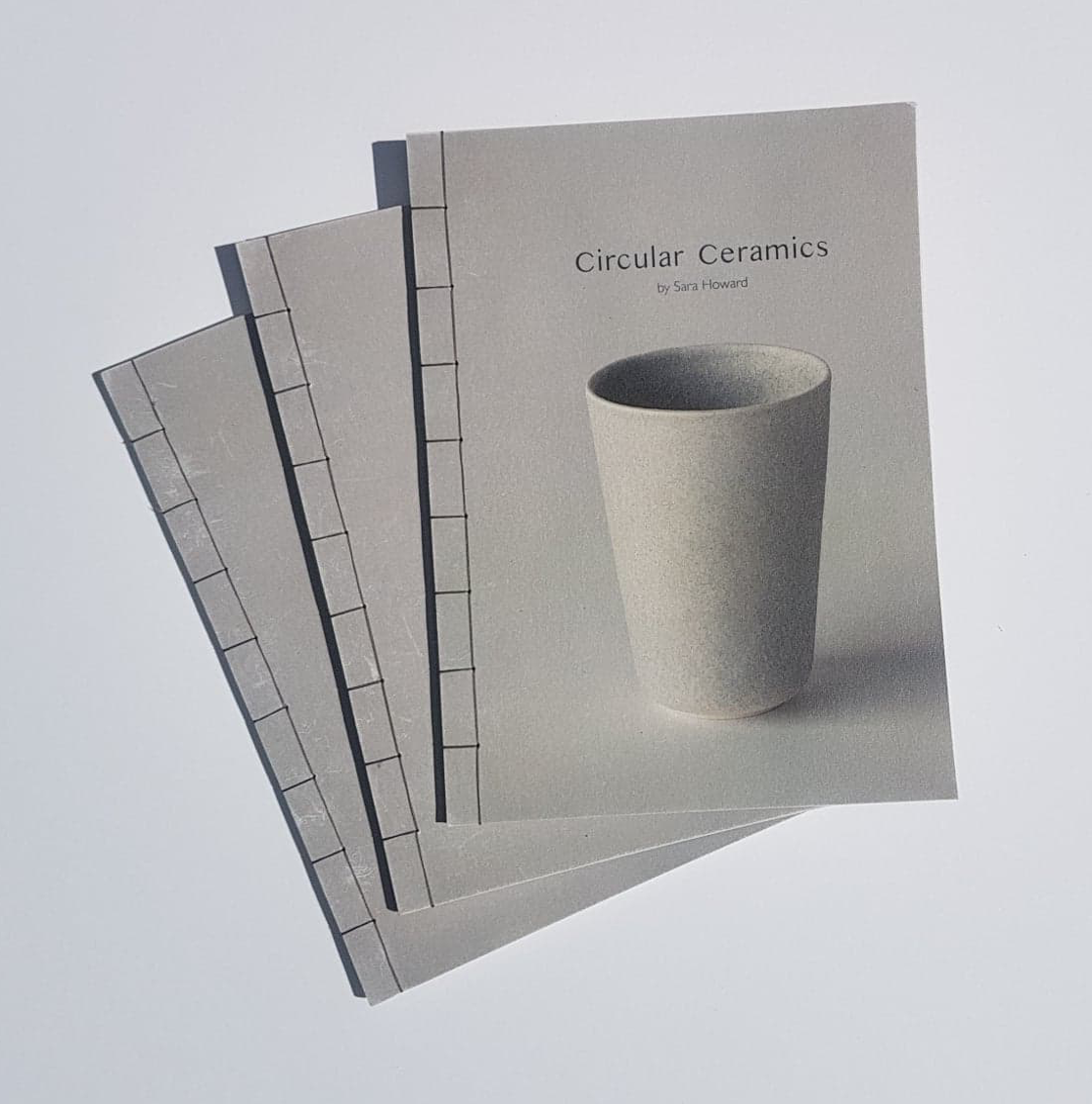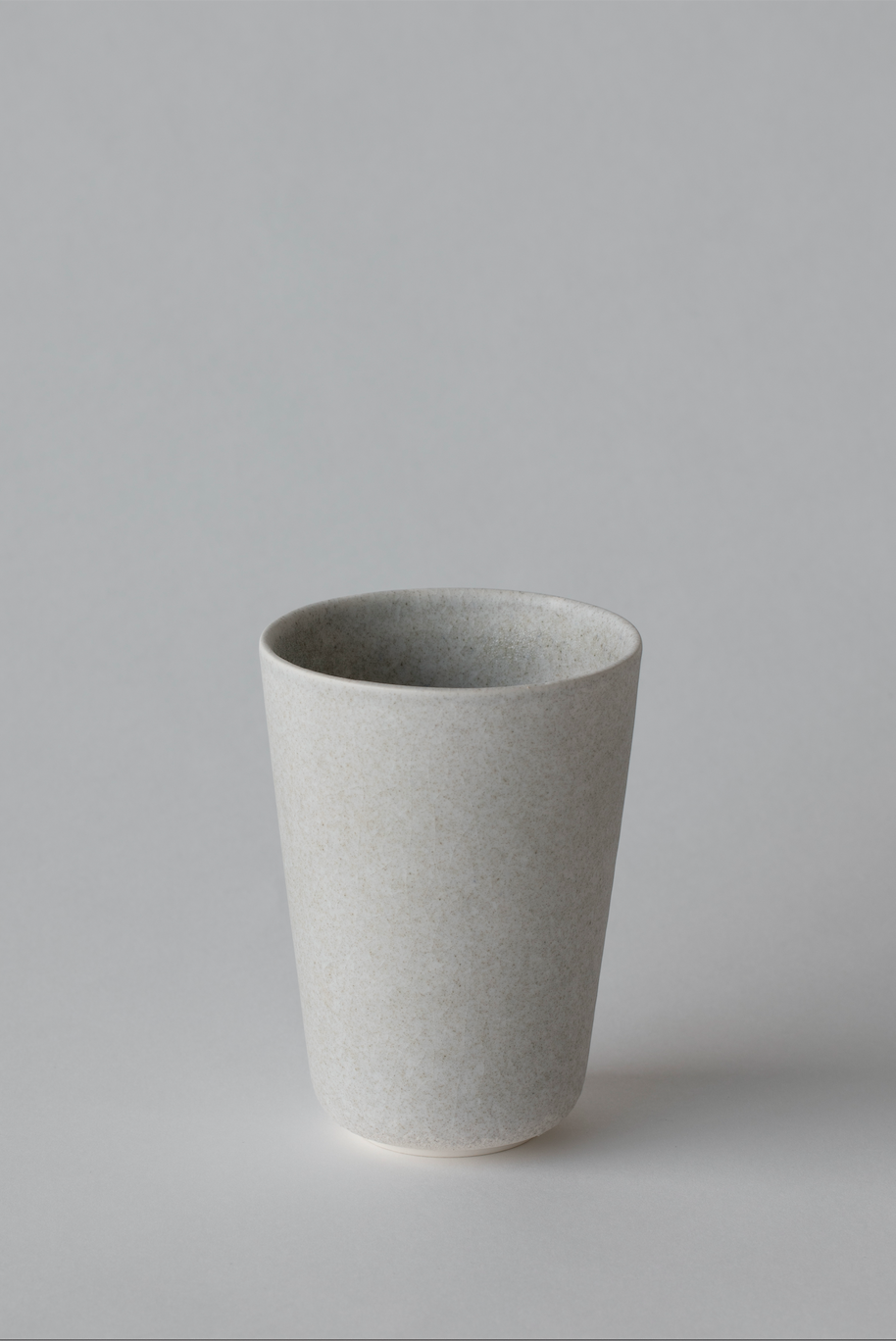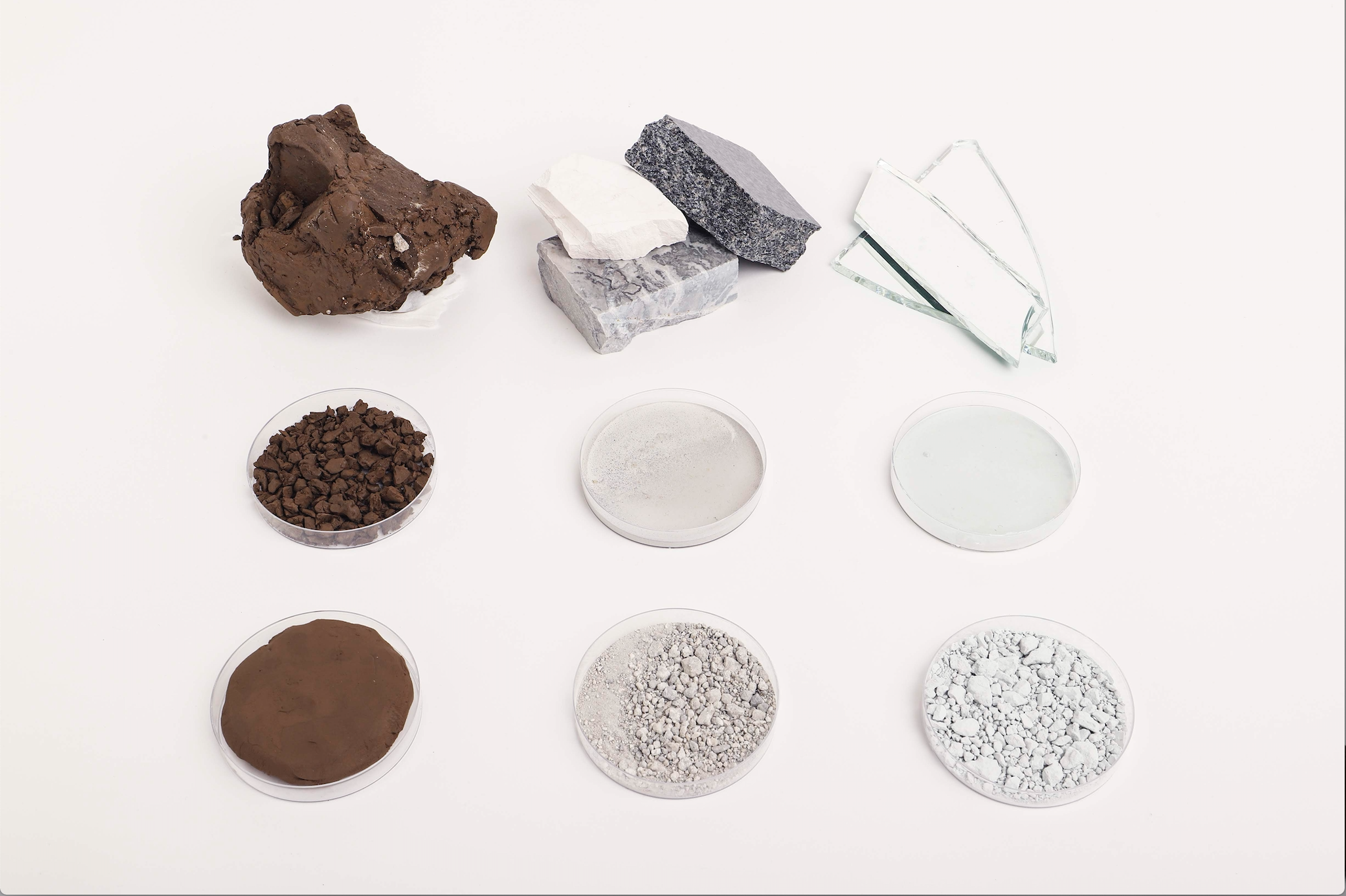Circular Ceramics

Useful information
- Team members
- Sara Howard
- Country
- United Kingdom
- Keywords
- Industrial symbiosis Circular economy waste by-products ceramics systemic change
Short Description
Designing an industrial symbiosis around the ceramics industry
Detailed Description
Circular Ceramics is a tableware collection made entirely from reclaimed industrial waste by-products, which minimises the consumption of finite raw materials and diverts waste away from landfill. By building relationships between industries that consume the same raw materials as the ceramics industry, there is the opportunity for waste by-products from one manufacturer to replace the raw materials in another, forming an industrial symbiosis. The open source book ‘Circular Ceramics’ outlines all the methods of identifying, processing and substituting waste for all scales of ceramic production, from studio potter to mass manufacturer, which provides both ecological and financial gains.
Project Details
- Does your design take social and cultural challenges and human wellbeing into consideration?
The mining of raw materials has many environmental repercussions. Uri, in Kashmir is an example of this, where the community is at risk of collapse as a result of the mining of gypsum, the raw material used to make plaster moulds for ceramic production. The residents and workers are also suffering chest related disorders from the dust pollution caused by the mining process.It is often communities in less developed areas that suffer the most from climate change. Industrial waste is often sent or tippied in poorer communities which damage the ecosystems and fertile ground. The climate related drought that started in Syria in 2006 destroyed 60% of Syria's farmland into desertland and drove 1.5 million climate refugees into the city where they clashed with another 1.5 million people from the Iraq war. Circular Ceramics eliminates the need for virgin mined raw materials and reclaims industrial waste, preventing the hazardous materials from damaging our increasing fragile ecologies.
- Does your design support sustainable production, embodying circular or regenerative design practices?
All three principles of the circular economy have been applied to the manufacturing process of ceramics in order to build an industrial symbiosis, whereby the waste material from one manufacturer is used as a raw material in another. The Circular Ceramics tableware collection is made from industrial glass, stone, construction and ceramic waste. In the manufacturing of glass panels, a hazardous slurry is produced when polishing the edges. This slurry can substitute the raw materials in ceramic glazes. A toxic slurry from the stone industries cutting process can also be used in ceramic glazes. Excavation waste from the construction industry can be used to form the clay body and the ceramics industries plaster waste can be used to make new plaster moulds. By using these methods we can eliminate the need for mined raw materials in the ceramics industry and divert waste away from landfill.
- Does your design use principles of distribution and open source?
The book I have written 'Circular Ceramics' is an open source book which outlines the methods of identifying, processing and substituting industrial waste for ceramic production. I want my methods to be shared and widely adopted amongst the ceramic industry at all scales, from studio potter to mass manufacturer. I am currently sharing my methods with small scale ceramicists to act as a proof of concept to mass manufacturers who may be more hesitant to adopt these methods.
The book is printed on paper made from waste coffee cups and bound with a thread made from waste PET bottles.
- Does your design promote awareness of responsible design and consumption?
Many of the raw materials currently extracted from the ground for ceramic production are expected to run out in the next forty years. For some materials like tin and zinc, there are just six years left of extraction based on current rates of consumption and known resources. Circular Ceramics demonstrates and shares the processes of substituting typical finite mined materials for alternative sustainable materials (that are free) which will protect our increasing fragile ecologies and will mean that this craft can continue to exist in the decades to come.
Images



Project Website
Social Media Accounts
@sara__howard